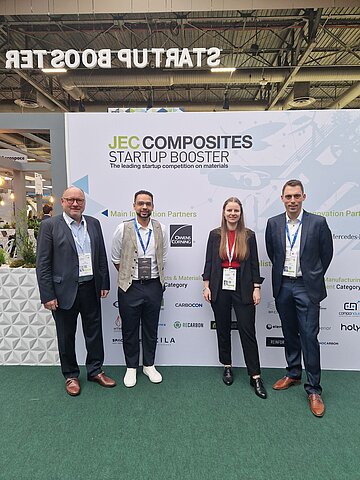
International networking at the world's leading trade fair for composites in Paris



CARBOCON is a leading independent service provider in the field of carbon reinforced concrete. We are your contact for any questions related to development and approval of innovative and technical solutions or patent applications. If you are looking for a partner to be at your side and support your projects from the first feasibility study, through the development and monitoring of test programmes, to the safe approval and later monitoring of the product application, then we are the right choice for you.
CARBOCON transfers knowledge and technology quickly and professionally to partners in business and industry and acts as a partner in construction, funding and collaborative projects.
Consulting and planning services can be provided quickly and flexibly on behalf of customers. CARBOCON is always available with its extensive expertise to work out the best solution together with customers and partners.
Many planning services and subsequent carbon concrete applications require special solutions and approaches. The knowledge of services and the existing and approved products of conventional technologies only allow the use of carbon reinforced concrete up to certain limits. Building with carbon reinforced concrete therefore requires its own variety of unique products. At CARBOCON we determine this at an early stage and act as a developer and licensor for our partners.
The keys to success are innovative ideas, motivated employees and a high-performance environment. The high level of innovation at the TU Dresden forms the basis for flourishing economic development in the Free State of Saxony. TUDAG creates an excellent infrastructure so that knowledge and technology can be put into practice. Both institutions are important network partners for CARBOCON to actively promote the introduction of carbon reinforced concrete technology into the economy and industrial landscape.
The CARBOCON team is also at your disposal as a central contact partner with interdisciplinary expertise. In connection with our range of services, this enables us to take care of various customers with different requirement profiles.
CARBOCON supports the projects from the first analysis to the subsequent application. The spectrum of projects ranges from comprehensive consulting on strategic, operational and technical issues in the use of carbon reinforced concrete to 'classic' planning for the strengthening of bridges and other structures with carbon concrete.
What can we do for you?
Give us a call. +49 351 48205 500